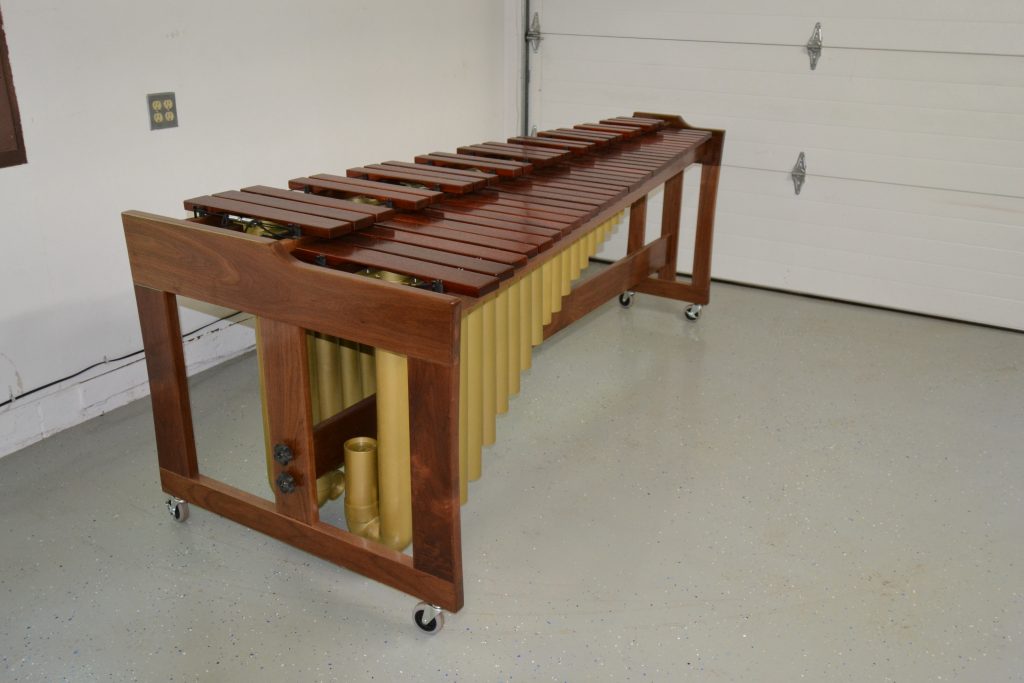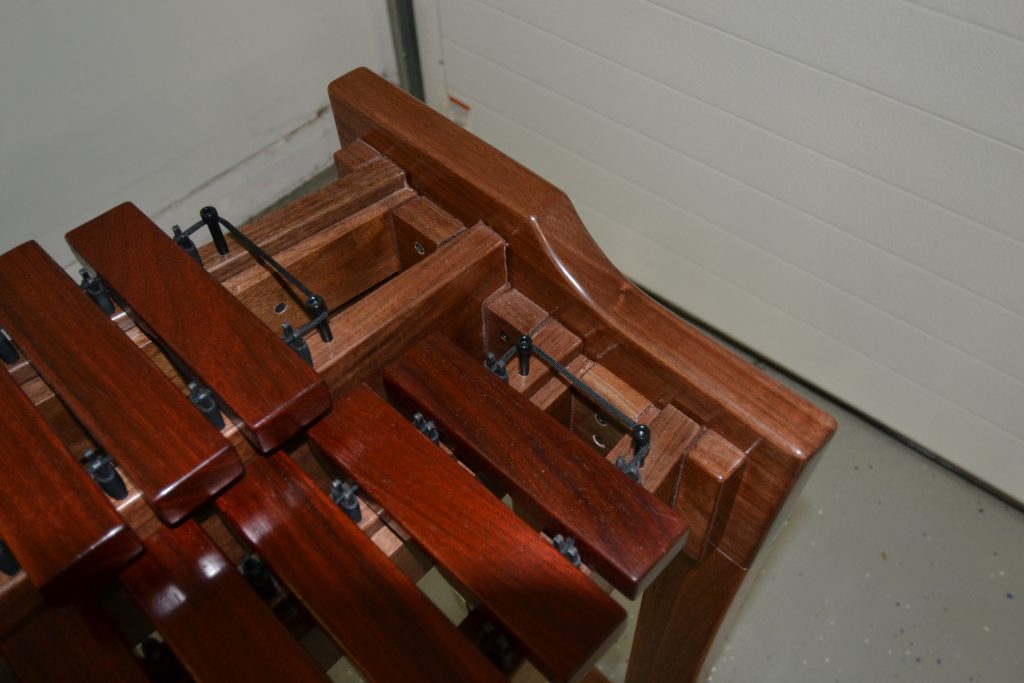MARIMBA
This project came about because I had made small box resonated marimbas for Christmas presents for two granddaughters. The bars for that project were made from walnut from the farm where I grew up. I learned a lot about how marimbas were made & tuned through this and was quite fascinated by the process. I have loved the sound of classical music on marimba for years, and after extensive research, I realized that this is something that I could build. I already had all of the necessary machinery and most of the materials. The project was launched.
I gathered information on bar and resonator sizes and the machining and tuning processes. I studied many different frame styles, and then made my own modifications to several that I had observed. The hardest part was finding proper materials for the bars. The highest quality commercial marimbas use Honduran Rosewood which is very expensive and not easy to find in the desired bar thickness. The next level of quality used African padauk; more plentiful, less expensive, but hard to find in the desired thickness. I had a large board of African mahogany the was left over from a big commercial project that I had done in Minneapolis decades ago, and decided to use that because the characteristics of that wood were somewhat desirable. I began machining & tuning, but continued to search for affordable padauk. As I was completing the process with the mahogany bars, I happened to find six boards of padauk in the right thickness just a few miles from here (that’s a long story in itself). I bought it and began the bar making process again. Having done that with the mahogany made the process much easier. The bars are tuned by cutting to proper length and then cutting/grinding away wood in the center portion of the bar. The fundamental tone is tuned at the very center of the bar; the first harmonic is tuned slightly farther out, and the second harmonic is tuned even closer to the end. The tuning process is very time consuming, and if the goal is overshot, the process must be started with a new bar. The frame was made with walnut from the farm. I milled several pieces and selected the most desirable for the frame. Bar posts were machined from 1/8 inch aluminum stock, then dipped in plastidip and inserted into holes that were bored in the rails. Soft latex rubber tubing surrounding each post prevents bar rattling. Resonators are made from PVC tubing that is capped at the lower end. They are tuned by gradually reducing the length until the proper pitch is obtained using a strobe tuner. They need to be tuned at the temperature that is close to the temperature where the instrument will be played. Plastic resonators produce a slightly more mellow tone than aluminum resonators that are used in many marimbas. In order to achieve good resonance, the resonator frequency must match the corresponding bar frequency perfectly.
The process took about 4 months to complete (along with some other things), but was extremely satisfying!
The marimba is constructed in such a way that it can be easily knocked down for relocating.













